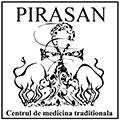The gums are pink in color and they bleed only in very rare cases. Eighty percent of the Earth’s population suffers from gum infections in a form or another. The most frequent ones are gingivitis and paradontosis. Unfortunately, people don’t pay enough attention in time, and paradontosis settles unnoticeably and develops slowly with the passing of years. When we have the slightest problems with our gums, it is advisable that we should find the cause and treat it in time.
Gingivitis is an infection of the gums that is caused by a poor oral hygiene and an accumulation of bacteria which grow into a bacterial plaque on the teeth. Food residues, bacteria and the exchange of bacterial cells between teeth and gums create sticky layers (thin white layer or white-yellowish calcified layer in the more serious cases) that destroy the gums around the base of each tooth. Unless this bacterial plaque is removed, it turns into a hard stony layer that cannot be removed by toothbrush. This situation hinders the elimination of bacteria that cause abscesses, infections and bleeding gums. The channels through which the gum bleeds are obstructed by bacteria and this gives birth to gingivitis. Gingivitis may also be caused by inappropriately made fillings, constant mouth breathing, diabetes, leukemia and lack of vitamins. The bacterial plaque may also be caused by the constant or repeated consumption of soft and sticky food.
Gingivitis is partially curable. However, the patients who don’t pay attention to this problem allow the evolution of gingivitis and its development into paradontosis, which means the loss of the osseous mass. According to the latest statistics, 280 million of the planet’s inhabitants suffer from this disease; out of them, the patients over 35 years old with paradontosis lose their teeth. There are many causes responsible for the evolution of paradontosis, but the main one is personal negligence. Another one is excessive smoking and tobacco chewing, as well. Similarly, the faulty dental works and fillings help creating orifices for the bacteria to settle in. The bad dental hygiene, the dirty food, excessive consumption of flour and sugar are more causes of paradontitis. Statistics show that primitive civilizations were seriously affected by this disease but we can see that even to the present day gingivitis and paradontosis haven’t been eradicated.
Gingival diseases develop quietly, almost asymptomatically or there is a secondary symptomatology, in the various stages, an almost unnoticeable one. As I have already mentioned above, a healthy person has light pink, hard, elastic gums that do not bleed. The first symptom is when our gums start bleeding without an apparent reason, or in the morning when we brush our teeth or when we chew harder food.
Also, other symptoms that develop in the above-mentioned diseases are inflammations, swellings, reddening, higher temperature of the gums and hypersensitivity or unpleasant odor. In time, the disease develops by changing color of the gum, namely it grows blue or purple. The gum retracts and oxygenation becomes very poor. Canals develop on the gums, 2-3 to 8 mm in size; teeth are lost and the inter dental space remains unusually large.
The classic medicine treats parodontosis by various methods, from prosthetic devices to dental implants. The traditional medicine treats this problem very seriously. Once a patient has come to the traditional medicine specialist, an herbal extract will be made for him or her, to complete the acupuncture treatment which helps with tissue regeneration in the first place, antibacterial treatment and many others. The herbal extract will contain a concentrated amount of A, C and E vitamins. The traditional medicine specialist also decides upon the alimentary regime during the treatment.

